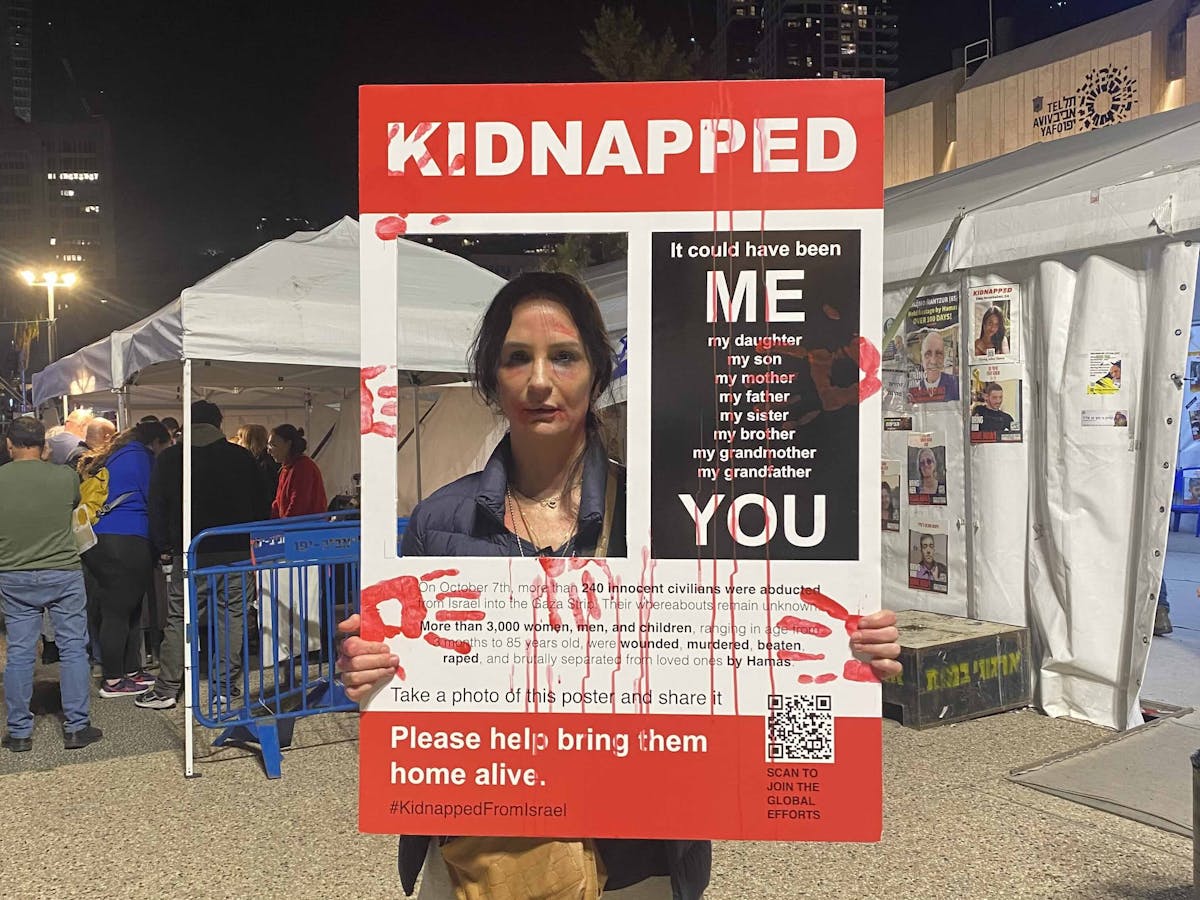A Letter From Hostages Square: The Mood Grows Frantic as Israelis Gather for Their Captive Countrymen
No deal has yet been announced, and it feels to most of Israel that this may be the last opportunity for a deal that brings back their loved ones alive.

It’s Saturday night in Tel Aviv, and thousands of Israelis have gathered for the weekly rally organized by the Hostages and Missing Families Forum. Tonight marks the 24th week of captivity for the Israeli hostages in Gaza, and the 24th week of horror, fear and grief for their families. Standing at the podium is Adina Moshe, a former captive in Gaza, who screams her frustration and anguish into the microphone as she recounts those she left behind in the tunnels.
A former member of the Knesset, Izhar Shay, wearing a hostage solidarity dog tag around his neck and a yellow ribbon pinned on his shirt, speaks of his son, Yaron, who was killed defending Kibbutz Kerem Shalom on October 7. He pleads for the release of the hostages at any price, even if it means that Israel will set free “the scum of the human race, the subhumans” that caused his son’s “heroic death,” so that his son and the others will not have fallen “in vain.”
Tonight’s rally overlaps with Purim, and in a macabre nod to the custom of dressing up in costume, family members wearing bloodied white clothes and plastic masks snake through the crowd in a line, a silent reminder of the lives at stake. Beyond the hope for another miraculous turn of fortune for the Jews, like that of Mordechai and Esther, the mood here is impatient, almost frantic, because it feels to most of Israel that this may be the last opportunity for a deal that brings home hostages alive.
An Israeli negotiating team, supported and pushed by the Americans, has been in Doha for 6 days. No deal has been announced yet. Back in Hostages Square, home to a small village of tents representing the various Kibbutzim and Moshavim that were attacked, Omri Lifschitz carries an Israeli flag and a picture of his father, Oded Lifschitz, who is still a hostage in Gaza, and he stands with his mother, Yocheved Lifschitz, who was released, and extended family members.
During the week, the families congregate here every day, forming their own community of pain. Yocheved Lifschitz says that the tragedy has brought the families of hostages together. “We’ve become a family of hostage families,” she says. A life-sized, walkable model of the tunnels has been built on the premises.
Sitting in the Nahal Oz tent is Nurit Shelhav, who grew up on the Kibbutz but left some 30 years ago. She comes to the tent in Hostages Square multiple times a week to offer her support and stand in for some of the survivors for whom these gatherings are still too painful. “We sit here for them. It’s the least we can do,” she says.
Ms. Shelhav is also worried that public interest in the hostages is dwindling, especially since she says the government has left the responsibility for campaigning on their behalf to the families. “Less so in Tel Aviv,” she says, “but in other parts of the country, people tell me that they’re seeing fewer and fewer of the posters,” a reference to the flyers and signs calling for bringing home the hostages now. She adds, in a country with a pulse as fast as Israel’s, “it’s been a long time since October 7.”
Carrying a version of the hostage posters she helped make famous in America not only for their presence but also their destruction through teardowns, is graphic designer Tal Huber, who along with Israeli street artists Dede Bandaid and Nitzan Mintz, created the poster campaign. “It could be any of us,” she says, her face smeared with black and blue makeup, as she looks at me through a hole she cut in an enlarged version of the famous “Kidnapped” poster. Since October 7, Ms. Huber put her personal and professional life “on hold” and transformed her branding company into a campaign for the hostages.
Ms. Huber doesn’t always come to the Saturday night demonstrations, but feels that the timing of this week’s event made it particularly important. She emphasizes the need to secure a hostage deal. “A deal is the only solution, the only way to bring them back. We must keep pushing the government to do whatever it can. They won’t come back without a deal,” Ms. Huber says.
Ms. Huber is frustrated over the scant progress made over the months since October 7, noting that she, as well as many other Israelis, expected the hostages to be returned after “two, maybe three weeks.” Ms. Huber worries that the extended time they’ve spent in captivity lessens their chances of being released alive.
“We know that of the 134 people, 32 are dead. But I’m afraid there are more. I’m really afraid,” Ms. Huber says.
While an anti-government rally was taking place a few streets over, Ms. Huber underscores that the demonstrations for the hostages are not political, and that the two rallies are intentionally separate.
“I’m not talking about the war or the political situation or finding a long term solution. It’s about bringing them back home. And then we can go from there,” she says.

